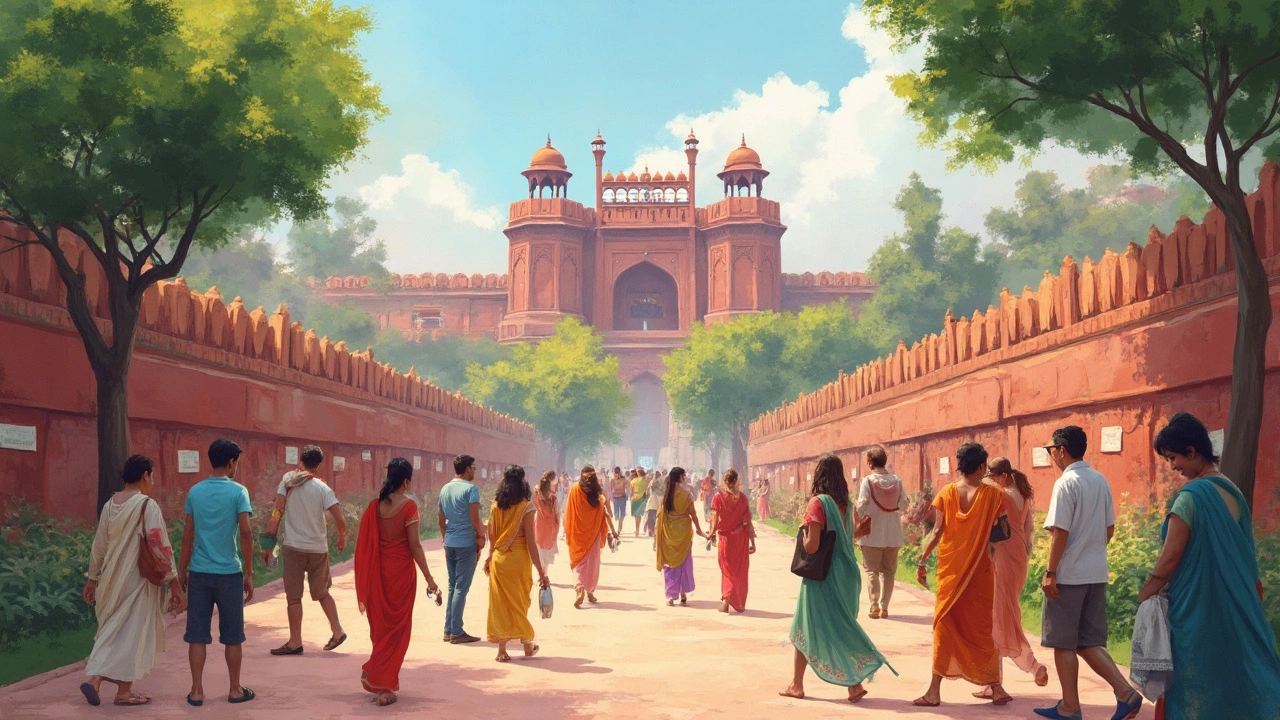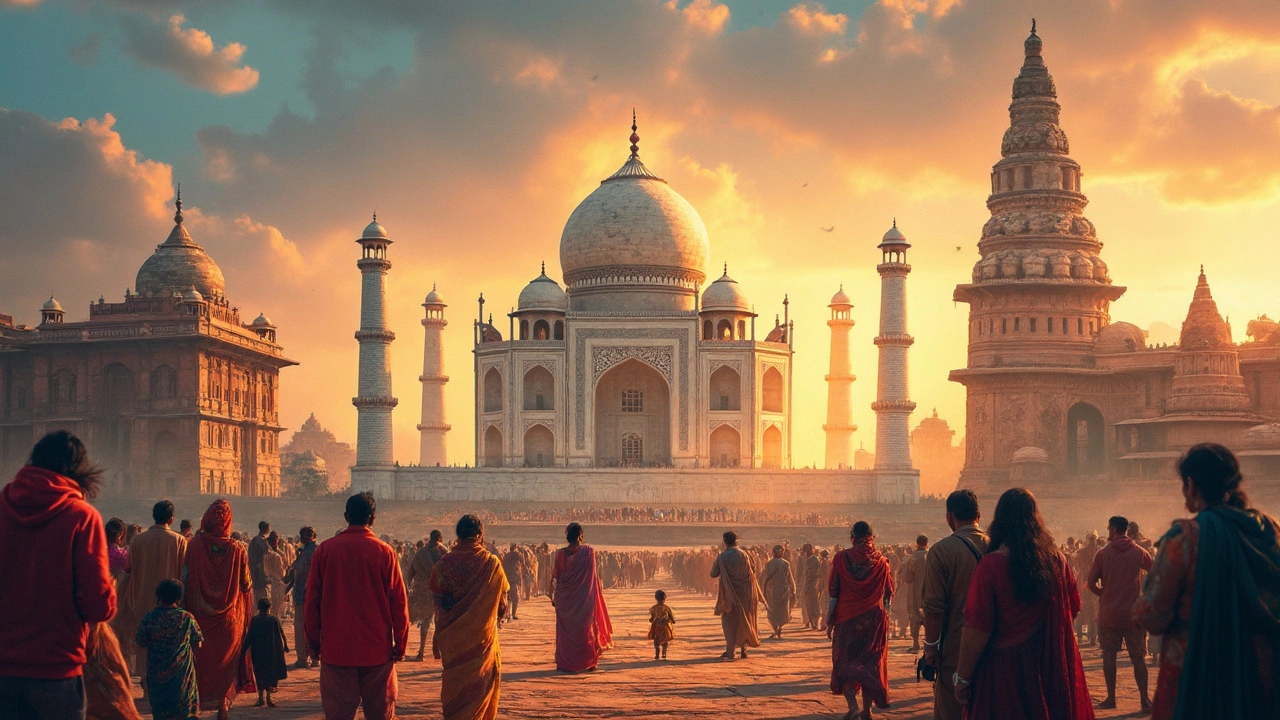World Heritage Sites aren't just pieces of old stone or dusty ruins. They're snapshots of history, places that shaped cultures, and honestly—some of the coolest spots you could ever visit. If you've ever wondered which country actually has the most of these UNESCO treasures, the answer is Italy, with China right behind. It almost turns into a friendly rivalry between ruins, temples, palaces, and wild forests.
India isn't far out of the picture at all. With 42 UNESCO World Heritage Sites as of 2025, India’s pretty much a legend on the world heritage stage. From the Taj Mahal's perfect symmetry to the wild caves of Ajanta and Ellora, each site tells a different story, and many are actual bucket list material for travelers.
Here’s the thing: every site added means more chances for global pride, but also more responsibility to keep them safe. If you’ve got even a tiny bit of wanderlust, planning a heritage site trip is worth your time—you can see how old and new India blend, taste local food nearby, and even learn about the lesser-known rules of visiting these gems without harming them.
- Who Has the Most UNESCO World Heritage Sites?
- Why Are Some Countries Leading?
- India’s Spot on the List
- What Actually Counts as a Heritage Site?
- Tips for Visiting and Protecting These Places
Who Has the Most UNESCO World Heritage Sites?
This one gets a lot of people guessing. As of 2025, Italy holds the title for the most world heritage sites, with a whopping 59 on the official UNESCO list. China is right on Italy’s heels with 57 sites. These are not just numbers—they reflect centuries of history, diverse cultures, and environments spread across both countries. So, if you’re ever on a trip dreaming of ruins, castles, ancient towns, or wildlife reserves, you know where to start.
The third spot goes to Germany, with 53 recognized sites. Spain and France aren’t far behind either. Here’s a quick look, just to put things into perspective:
| Country | Number of Sites (2025) |
|---|---|
| Italy | 59 |
| China | 57 |
| Germany | 53 |
| Spain | 50 |
| France | 49 |
| India | 42 |
Pretty wild, right? These rankings are always shifting, since UNESCO reviews new entries every year. Some countries submit new sites, others lose status if they don’t protect what they have. It’s practically a global scoreboard for culture and nature.
Being at the top doesn’t just mean having the oldest stuff. Countries with more resources or bigger tourism budgets often push for more nominations. But let’s be honest—a visit to any of these leading countries delivers a crash course in architecture, art, and living traditions, all at once.
Why Are Some Countries Leading?
Ever notice how Italy and China keep popping up when people talk about world heritage sites? It isn’t luck. These countries are packed with ancient cities, diverse landscapes, and histories that go back thousands of years. Italy alone has everything from Roman ruins to Renaissance palaces. China’s list covers the Great Wall, giant Buddhist caves, and entire old towns still buzzing with life.
But heritage isn’t just about age. The more active a country is with UNESCO – meaning they study, propose, and protect new sites – the bigger their collection grows. A lot comes down to passion, funding, good paperwork, and sometimes, just knowing how to grab UNESCO’s attention. India, for example, keeps pushing to get more famous landmarks and natural wonders on the map every year.
Another factor? Sheer size. Big countries usually have more chances to show off rare wildlife, unique ecosystems, and huge spread of cultural traditions. Geography gives countries like China and India a giant head start.
- Historic depth: Longer histories (think Rome or ancient dynasties) mean more ancient monuments survive.
- Active preservation: Countries investing in conservation and restoration get noticed by UNESCO.
- Political motivation: Governments sometimes campaign hard for international recognition—it boosts tourism and national pride.
- International cooperation: Being involved in UNESCO events helps countries build their case and expertise.
Check this table to see how the top five stack up (2025 data):
| Country | Number of World Heritage Sites |
|---|---|
| Italy | 59 |
| China | 57 |
| Germany | 52 |
| Spain | 50 |
| France | 49 |
So next time you see a country boasting about its UNESCO nods, remember—it’s part history, part hustle, and a bit of knowing how the system works.

India’s Spot on the List
If you look at the global lineup, India heritage sites are hard to miss—there are 42 of them as of 2025, which means India’s in the top 10 countries with the most world heritage sites. That’s pretty amazing for a country with so many different languages, landscapes, and traditions in every corner.
Everyone knows the big names like the Taj Mahal (seriously, millions visit it every year), but there’s way more to the list. Places like Kaziranga’s rhinos, Keoladeo’s bird paradise, the Sun Temple at Konark, and the spooky ruins of Hampi—the variety is massive. UNESCO isn’t just about historic palaces or temples; it also picked natural wonders and even whole mountain railways because of their cultural innovation.
Want a quick look at how India stacks up next to a couple of its neighbors and the top players? Check this out:
| Country | Number of Heritage Sites (2025) |
|---|---|
| Italy | 59 |
| China | 57 |
| Germany | 52 |
| India | 42 |
| Japan | 26 |
What’s cool is that India keeps adding to this list. In the last few years, places like Dholavira (an ancient Harappan city) and the Ramappa Temple in Telangana got the UNESCO stamp. These aren’t just old relics—they’re proof of ancient science, eco-friendly city planning, and wild design skills.
UNESCO itself has recognized India's efforts. As they said in a recent update:
“India’s World Heritage sites offer an exceptional example of cultural and natural diversity, reflecting a long history of interaction and creativity.”
If you want to see the full Indian heritage list, the Archaeological Survey of India keeps it up to date on their website. By the way, if you ever travel to these spots, you’ll notice special markers and info boards, which actually help spread awareness and stop damage from careless tourism.
So yes, when someone talks about world heritage sites in India, you know you’re dealing with some serious history, crazy variety, and cultural pride packed into a single country.
What Actually Counts as a Heritage Site?
UNESCO World Heritage Sites aren’t random old buildings or pretty views—they have to check some pretty specific boxes. To be on the list, a place needs what UNESCO calls “Outstanding Universal Value.” Basically, it has to mean something special for all of humanity, not just the locals. A flashy palace doesn’t make the cut unless it blows people’s minds for its history, art, or impact.
There are three main types:
- Cultural heritage sites: These are things humans built or created, like old forts, temples, caves, or even whole cities. Think the Taj Mahal or the Red Fort in India.
- Natural heritage sites: These are places where nature takes center stage—huge parks, mountains, forests, or biosphere reserves. Kaziranga National Park is a classic Indian example.
- Mixed sites: Some special places tick both boxes—full of natural beauty and packed with history or culture. Khangchendzonga National Park is one of India’s rare mixed sites.
Here’s what UNESCO actually looks for when they select a site:
- Does it show off human creativity or cultural tradition?
- Is it linked with events or ideas that changed history?
- Does it protect rare plants or animals, endangered habitats, or amazing geological stuff?
- Can it teach the world something big?
According to UNESCO, “Heritage is our legacy from the past, what we live with today, and what we pass on to future generations.”
“World Heritage sites belong to all the peoples of the world, irrespective of the territory on which they are located.” — UNESCO World Heritage Centre
India's World Heritage Sites include everything from ancient temples to bustling wildlife reserves. Here’s a quick look at the types India has, since it’s a bit of a powerhouse for both cultural heritage and natural heritage:
| Type | Number in India (as of 2025) | Examples |
|---|---|---|
| Cultural | 34 | Agra Fort, Mahabalipuram, Qutub Minar |
| Natural | 7 | Great Himalayan National Park, Sundarbans |
| Mixed | 1 | Khangchendzonga National Park |
It’s not easy to get on the world heritage sites list. The place has to be well protected, managed, and standing around long enough to prove its value to the future—not just the past. Next time you visit any of India’s heritage sites, you’ll know exactly what sets them apart from the rest.

Tips for Visiting and Protecting These Places
Every world heritage site you visit is more than just another Instagram post—it’s a living archive. Taking care while exploring actually keeps these places around for future generations. Here’s how you can visit smart and do your bit for preservation at the same time.
- Follow the rules at the site. And yes, sometimes those rules are strict, especially at busy India heritage sites like the Taj Mahal or Qutb Minar. Touching ancient carvings or wandering off paths increases wear and tear, and even the tiniest damage adds up fast when thousands visit each day.
- Skip single-use plastics. In 2024, a survey at Kaziranga National Park (a UNESCO site in India) found that nearly 60% of trash left by tourists was plastic. Carry a reusable water bottle and snacks in reusable packaging.
- Listen to local guides. They know exactly what’s allowed and can share stories you won’t find in guidebooks. Plus, hiring a guide supports local jobs around these UNESCO treasures.
- Book your tickets in advance. Popular spots like Agra Fort or Hampi have daily limits to avoid overcrowding. Pre-booking saves time and makes site management easier.
- Travel during off-peak times. Fewer crowds not only make for a better visit but also reduce the risk of accidental damage to vulnerable areas.
- Use on-site facilities responsibly. If there are trash bins, use them. Avoid picking plants or climbing on old walls, even for the perfect selfie.
Here’s a quick look at some of the top cultural heritage sites in India and average yearly visitors before the pandemic:
| Site | Average Annual Visitors |
|---|---|
| Taj Mahal | ~7 Million |
| Qutb Minar | ~3.9 Million |
| Red Fort | ~3 Million |
Little things add up. Even something as basic as not carving your name into a pillar or not leaving trash behind protects these heritage sites for everyone. Plus, showing respect inspires others to do the same. Want to enjoy these wonders with your own eyes? Treat them like treasures—they really are.
